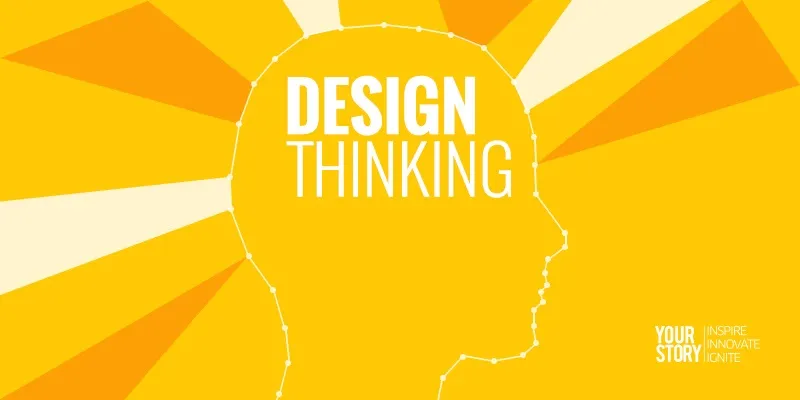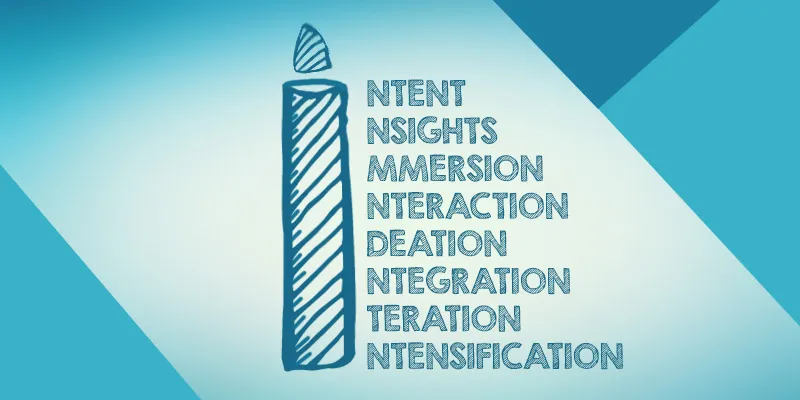The '8 Is' of design thinking for startups
From ‘lean’ methods and ‘agile’ innovation to design thinking and customer development, a number of useful tools are emerging for startups and innovators. Design thinking is a human-centered approach towards problem solving and product generation which is driven by creativity, customer empathy and iterative learning.
Based on research, case studies and workshops conducted in this field, here is my framework of the '8 Is' of design thinking for startups: intent, insights, immersion, interaction, ideation, integration, iteration and intensification.

1. Intent
Intent to launch a new product or service is driven by the awareness that something profound has changed, inspiration to do something new, or a hunch that the market needs a new kind of offering. This can be due to personal motivation, an external problem to solve, or a resolution to make some dream come true. This desire can create a vision and mission for a founder or a strategic conversation in a larger firm. Examples here include the launch of Infosys which went on to become a world class IT services firm, the creation of Snapdeal as an online marketplace for commerce in India, and the aim of almost every city in the world today to become a startup hub like Silicon Valley.
2. Insights
The next step consists of primary and secondary research to gather more intelligence about the domain, ecosystem and potential customers. Interviews with experts and trend reports from market research firms help set the broader context. Personal anecdotes and even notable travel experiences are useful here to frame and re-frame the issues. This is how, for example, Howard Schulz would launch his Starbucks journey based on insights from baristas in Italy.
3. Immersion
Inspired by ethnographic and anthropological research, this step consists of suspending judgement and taking a ‘deep dive’ into the customer environment. Immersion can help discover blind spots and get past prior bias, and converts hunches into informed guesses. User journey maps and cultural archetypes are tools that can be deployed here. Many successful rural products (e.g. Hindustan Lever’s shampoo sachets) are based on immersion into how the rural shopping experience differs from urban settings.
4. Interaction
With specific objectives as well as empathy in mind, this step now consists of dialogue and interviews between the startup team and potential customers. The key aim is to test and validate assumptions about current and unarticulated user needs in a specific problem area. For example, many B2B startups interact with corporate employees, CIOs and CTOs to flesh out the broader context for their proposed workflow solutions.
5. Ideation
Brainstorming sessions now commence about what approaches and products may work or how existing products can be modified, with divergence (accumulating a wide range of ideas, including wacky and crazy ones) and convergence (whittling the list down to more feasible options). Clustering techniques, storyboards, provocative ideation, role play, visualisation and creative documentation are useful techniques in this step. More interaction (previous step) may also be needed here to flesh out ideas in detail. Product components and features will be conceptualised in this stage, possibly with multiple versions.

6. Integration
Multi-disciplinary perspectives are now brought in at this stage, with inputs from development, design, marketing and competitive intelligence perspectives. These feed into the creation of a series of prototypes, demos, mock-ups or virtual renditions, to be tested in parallel with different user groups.
7. Iteration
Ideas, assumptions and actual prototypes are now subject to systematic iterative testing. It may be necessary to recast the original intent and even gather more market insights at this stage; further immersion may again be needed to see why the use case scenario perhaps did not work out as anticipated. Failures or mistakes here should be cast more as assumptions which have been invalidated, and development paths or features can be ruled out. Feedback loops should be short, and pace of testing should be fast to weed out unwanted options. Experimentation can lead to pivots if major changes are needed, in which case the original intent may need to be modified.
This is how, for example, Twitter evolved from its earlier stages into today’s indispensable micro-blogging and mobilisation tool (see my review of the book by Twitter co-founder Biz Stone), or how redBus eventually developed a key platform for bus ticketing in India (see YourStory article here).
8. Intensification
Only at this stage are you ready for a full launch of the first minimum viable product or service, with subsequent marketing plans and customer support once the final product is ready. You will now some have clues for what the product roadmap may look like, what adjacent or new products can be planned in different scenarios, and how you can differentiate from and outpace the competition. But these too will need to go back into the loop of the '8 Is' above. The rise of mobile payment model m-Pesa in Kenya and its adoption in India and the Philippines is a good example of scaling (see YourStory analysis here).
The road ahead
According to innovation strategist and author Idris Mootee (see my book review), design thinking can help organisations deal with challenges of relevance (by alignment with customer needs), extreme competition (by deep customer engagement), commoditisation (by creating deeper customer relationships), creative gaps (by co-creation with stakeholders), lack of growth (by compelling storytelling) and strategy (through open innovation). Emerging frontiers in this space include the rise of crowd sourcing and crowd funding to gather and validate ideas, co-creation by multiple partners, and the emergence of social media as a powerful medium for early demos and feedback loops.
Over the years, we have witnessed the rise and spectacular fall of companies such as Kodak and the demise of once-successful products like the Sony Walkman, Samsung flip-phones, Nokia emerging-economy feature phones and Motorola Razr. In contrast, there are successful examples such as the rise and evolution of Apple’s product pipeline, Amazon Kindle, Nike Plus, Twitter, LinkedIn and Facebook.
In this context, design thinking is a practical tool for entrepreneurs and innovators to ensure their organisation stays at the cutting edge of The Knowledge Cycle: new practices (via creativity and invention), next practices (through innovation and entrepreneurship) and best practices (via knowledge management and performance excellence).
Useful resources for further engagement with the field include the book '101 Design Methods' by Vijay Kumar (see my book review), 'Eight Steps to Innovation' by Rishikesha Krishan and Vinay Dabolkar (see my book review), design methods of the Stanford d.School, design toolkits of IDEO and collective action toolkit of Frog Design.







